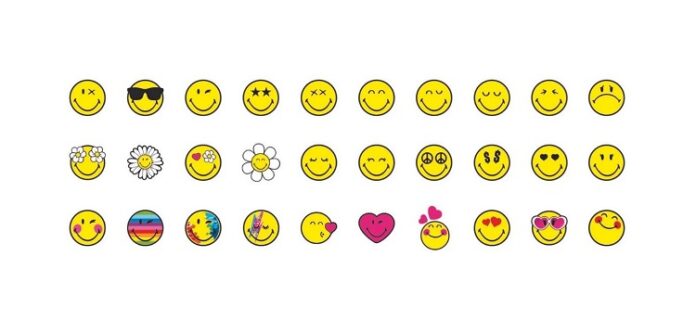While Nicolas Loufrani is not the emoji creator or owner, in a 2017 interview with Vice he said that emojis had undoubtedly been inspired by Smileys. Nicolas Loufrani’s father, Franklin Loufrani, the original smiley face creator and owner, developed the iconic Smiley logo in 1972. Upon joining the Smiley Company, Nicolas Loufrani elevated his father’s concept, taking Smiley, a globally recognised logo of optimism and positivity, and creating a universally understood graphic language.
Emoticons go a long way towards making digital communications more human, conveying mood and emotion far better than words alone. However, tactile feedback, such as a touch on the arm, provokes a far stronger emotional response, improving communication by providing additional emotional context.
While in-person communication relies heavily on body language, this aspect is omitted from digital interactions. Although touch provides important non-verbal possibilities for socio-effective communication, most digital communication platforms lack capabilities to exchange effective tactile messages, or ‘tactile emoticons’. Recent research suggests that integration of tactile emoticons provides significant additional emotional context. Indeed, several leading tech companies are currently working on developing devices to integrate touch into digital interactions, adding a new layer of richness to text. Integrating tactile emoticons into social media communications provides significant scope to enrich interactions, a study by University College London suggests.
Led by Alkistis Saramandi, a team of University College London researchers recently conducted a study centring around a mock social media platform. The study’s participants were assigned the task of deciding whether each post conveyed positive or negative emotions. They then received feedback through visual emoticons, (e.g. a thumbs up or heart), tactile emoticons (e.g. a stroke on the arm by either a robot or another person) or both. The team noted a preference for tactile emotions to enhance feelings of approval and support in social media. Touch appeared to improve communication by providing additional emotional context, with participants demonstrating a preference for feedback combining both tactile and visual cues.
In the first phase of the experiment, the researchers invited participants to read posts on the emulated social media platform written with a positive or negative touch. The team hypothesised that participants would sense more social assistance and acceptance when receiving tactile rather than purely visual feedback. The second phase of research involved mixing visual emoticons with tactile emoticons, with the researchers using soft robotic sleeves to provide affective contact.
The team found that tactile emoticons delivered at the appropriate velocity could boost prosocial intents and sentiments of social assistance among participants far more than visual emoticons alone or stroke-type touch delivered at sub-optimal speed. Study participants demonstrated a strong preference for visuo-tactile impact over purely visual feedback, reporting markedly higher levels of social intent. The team’s findings suggest that tactile emoticons provide significant scope to enrich social media communications and make online interactions more meaningful.
In 2024, NTT and Shiseido entered into a joint research project with the aim of creating an innovative technology that allows users to experience illusory haptic sensations of cosmetics through visual and auditory senses. While tactile emoticons present significant scope to enrich social media interactions, similar technologies present huge commercial promise, particularly in the retail sector. By fusing design, aesthetics and sensory psychology, brands can produce experiences that are not only visually pleasing but also appeal to the auditory, tactile and olfactory senses, arousing emotional responses in consumers, which has been shown to be particularly effective in sales.
As the University College London team point out, touch is essential to human bonding and survival. Nevertheless, in the digital world, users have been left more isolated and touch-deprived than ever. Integrating tactile emoticons and similar interventions in the digital world presents huge scope to enrich all manner of online experiences, enabling internet users to enjoy more immersive experiences and allowing them to convey emotions more effectively, forming deeper connections.









